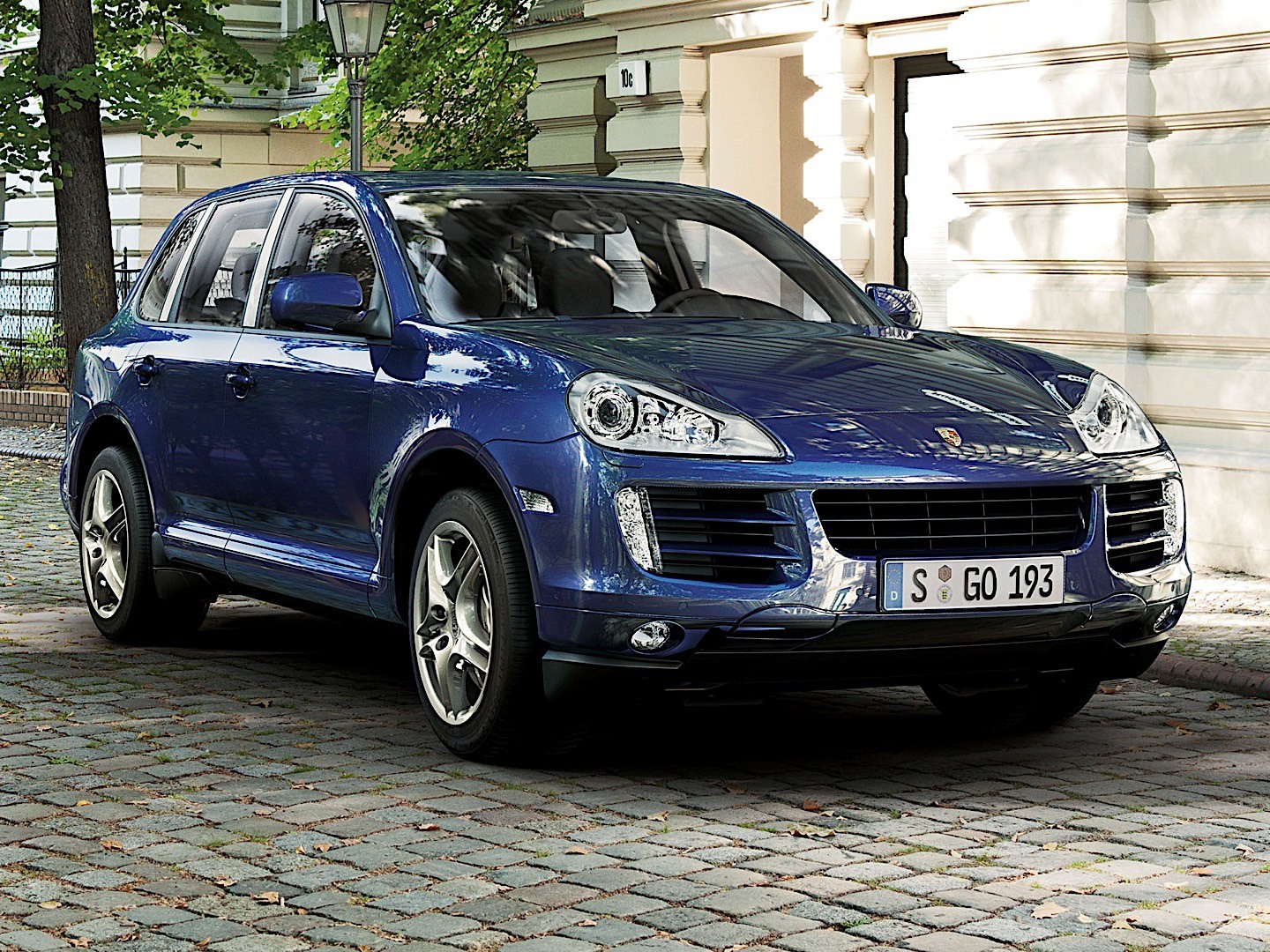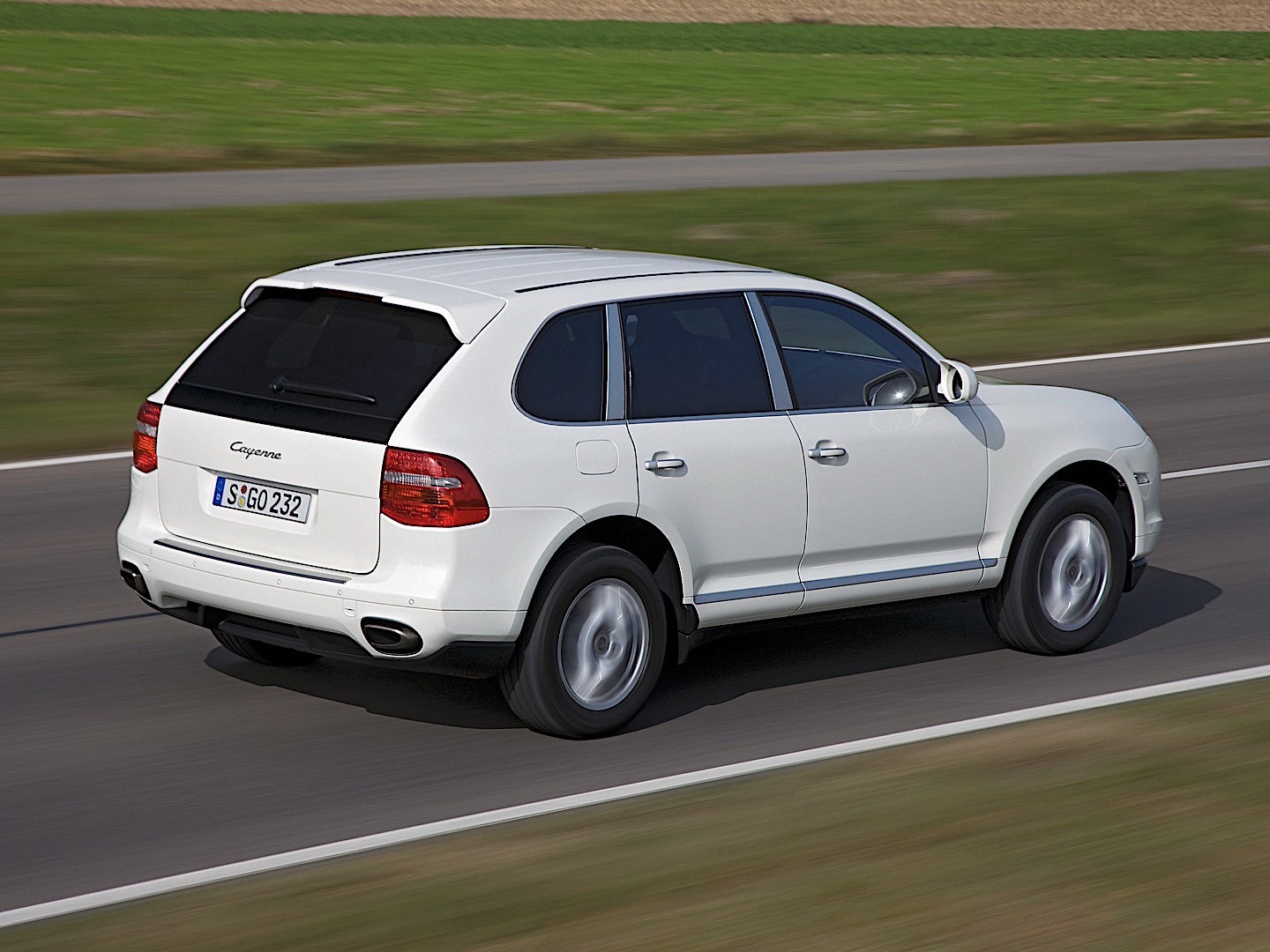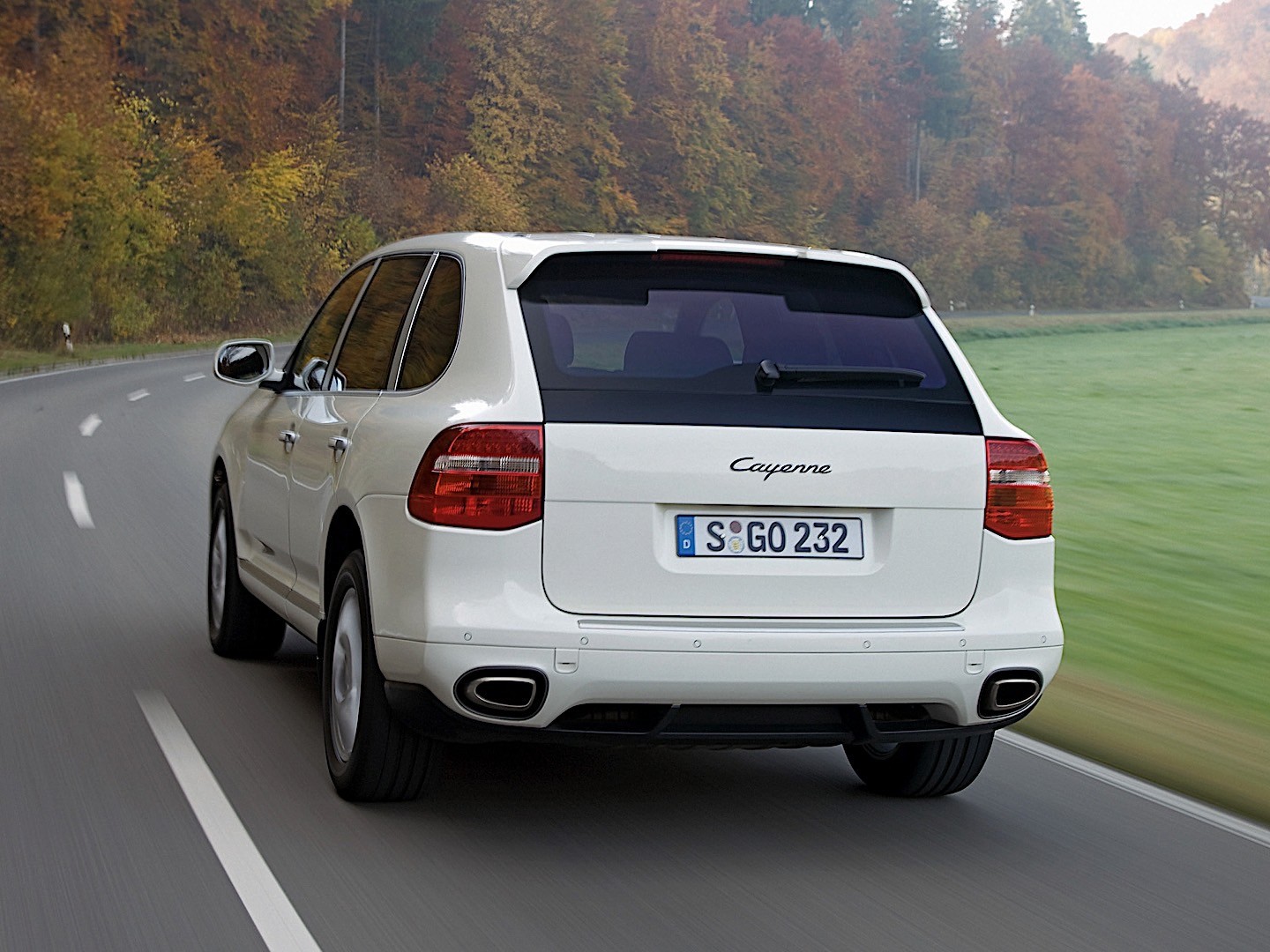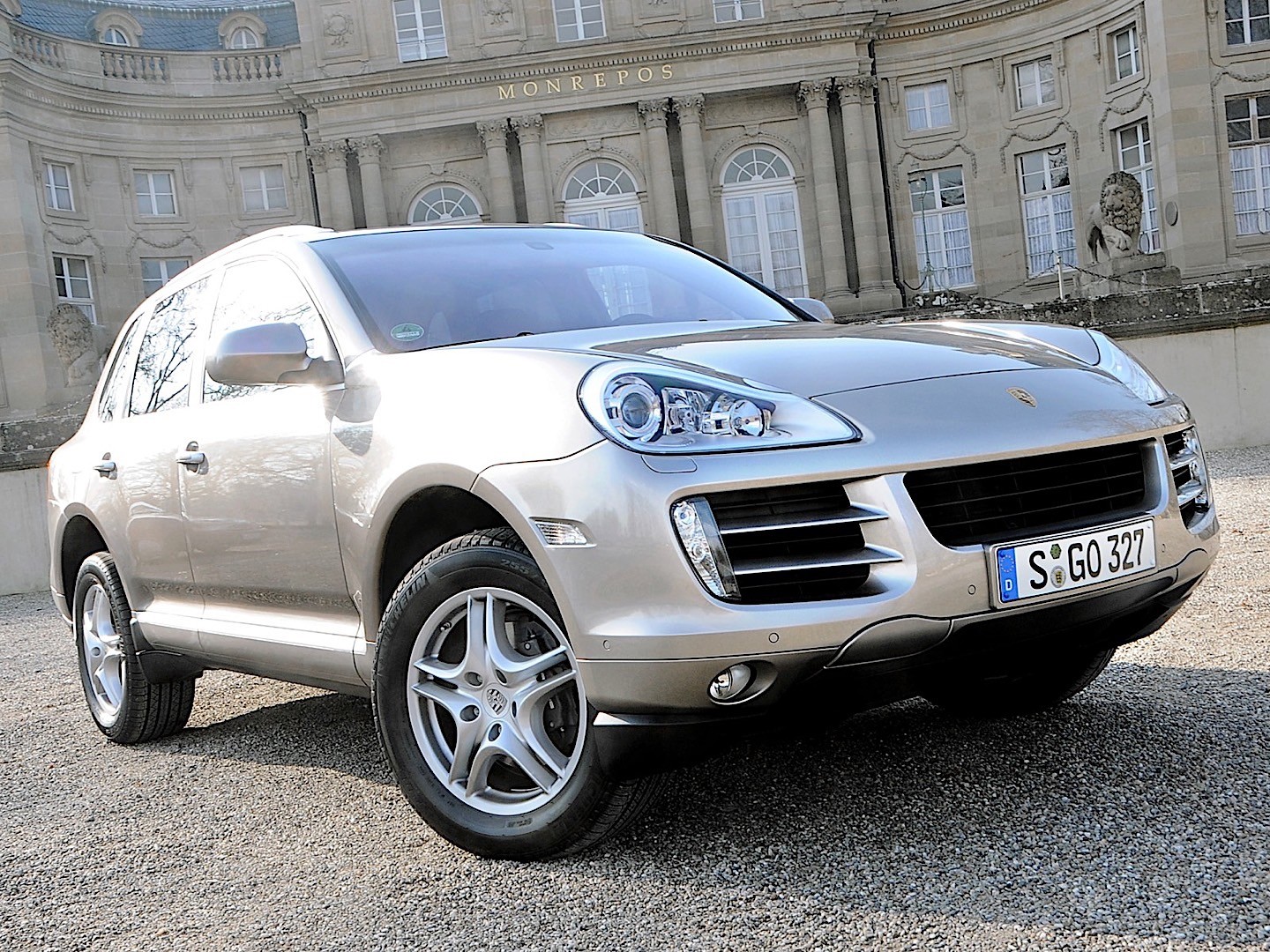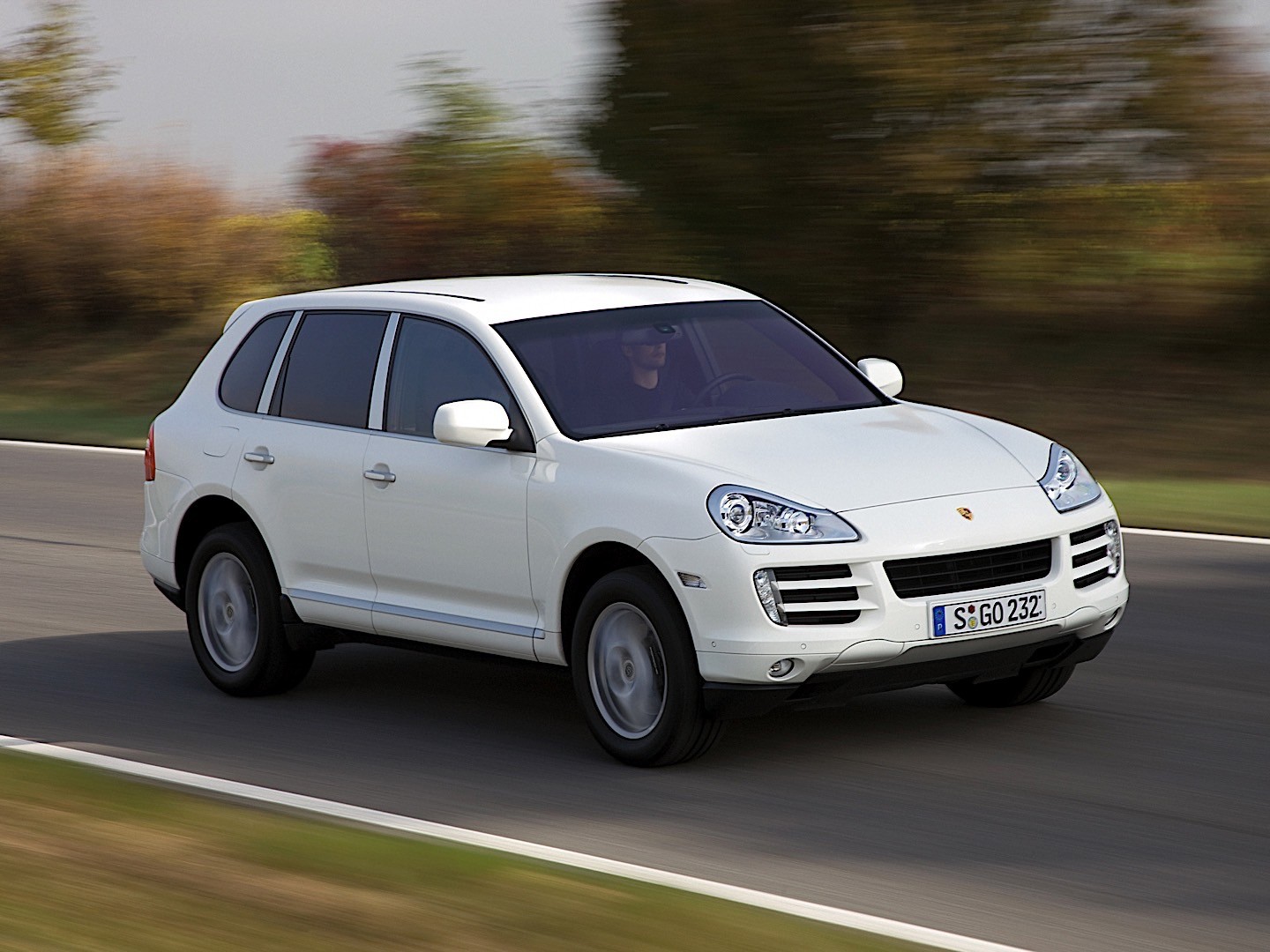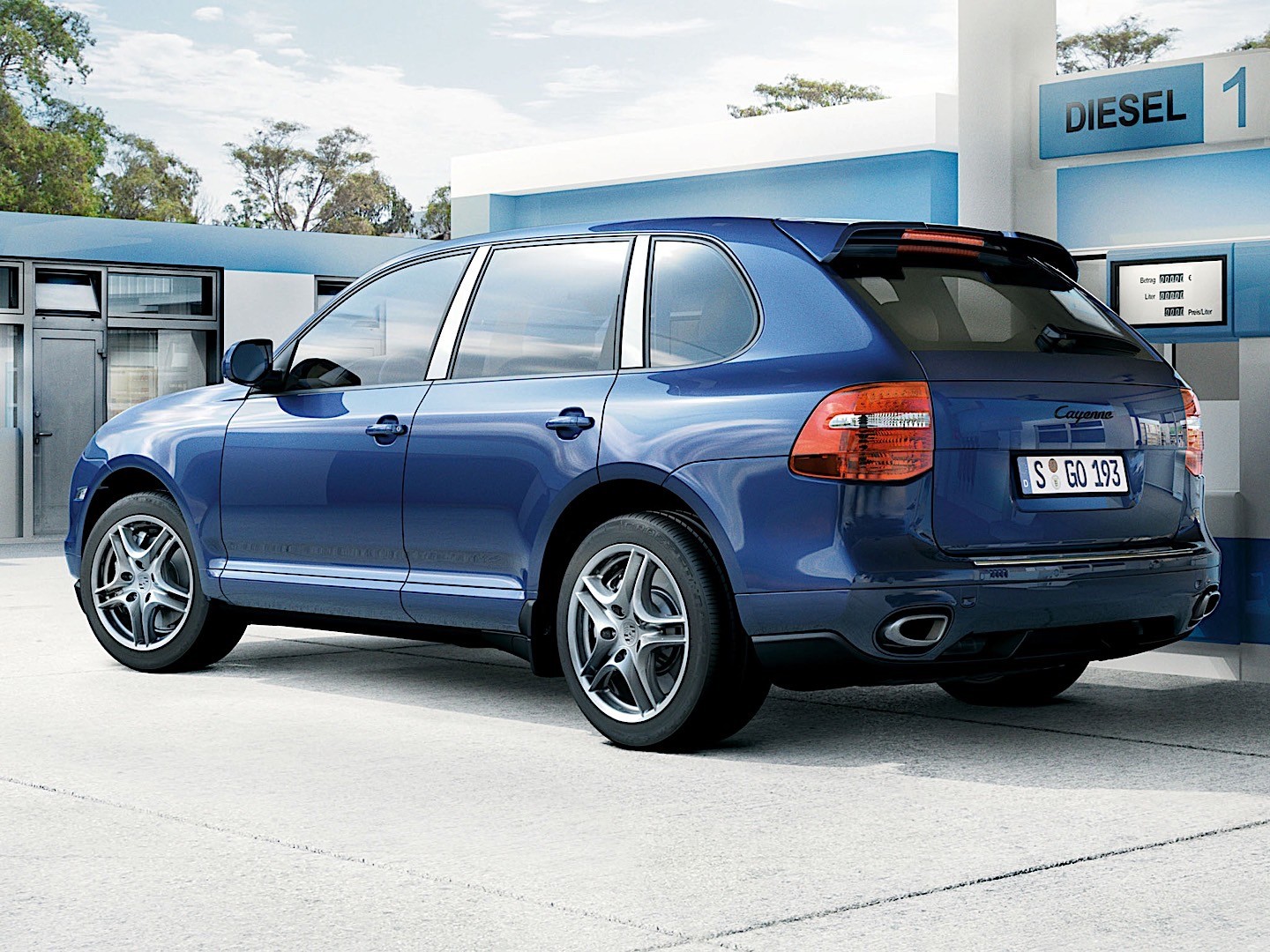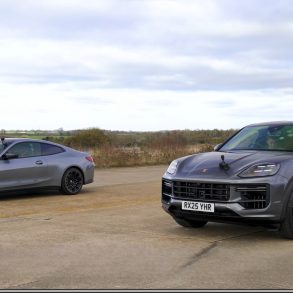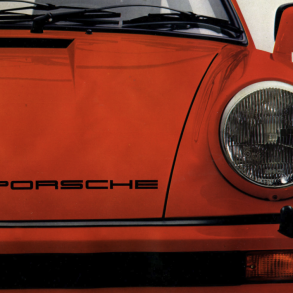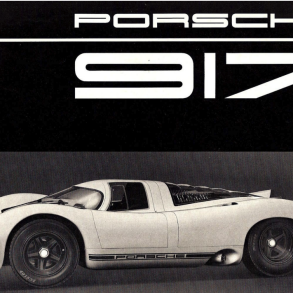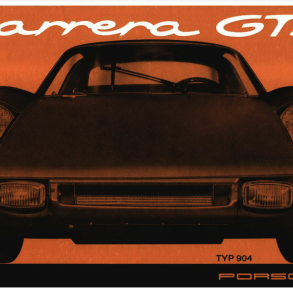(2008 – 2010) Porsche Cayenne Diesel – Ultimate Guide
It was the first oil-burner Porsche in history. The European market asked for a diesel engine and the car-maker had to deliver it to keep the sale up in a struggled market affected by the world financial crisis.
When Porsche launched their first off-road model, the Cayenne, in 1997, the whole world was shocked. Nobody could believe that this could be possible. But they did it right and almost 160.000 units were sold between 2002 and 2007. And, despite all the odds, the Cayenne was a great SUV with real off-road abilities and strong performance.
But the look even if it resembled some other 911 models, it wasn’t completely accepted. For the facelift, the streamlined headlights enhanced the car’s look. The bumper featured the same big air-scoops to cool the engine and the brakes. The DRLs were placed underneath the headlights, and inside of the side-scoops. A new set of rear-view mirrors were installed.
The interior was almost unchanged when compared with the base, V6-gasoline Cayenne. It featured the same seats and standard audio system. It received new colors for the leather seats. The Cayenne was fitted with a power-liftgate as an option.
The engine was a carry-over from the Audi line-up, with a variable turbocharger system and a 3.0-liter displacement. It offered 240 hp and it was tuned to offer more performance. For instance, at hard accelerations, the system disengaged the AC compressor until the engine reached 2500 rpm. The Cayenne diesel was available with an option for an off-road package that added a locking rear differential an air-suspension to increase the ground clearance and a low-gear transfer box.
Pictures
Press Release
For the first time Porsche is expanding its model range with a new model powered by a diesel engine – the Porsche Cayenne Diesel entering the market in February 2009 with its ultra-modern V6 diesel power unit.
This combination of Porsche’s highly versatile sports utility with the economy and high torque of a diesel is simply ideal for long distances of up 1,000 kilometres or 620 miles, the Porsche Cayenne Diesel offering ideal qualities for towing a trailer of up to 3.5 tonnes. Added to this there are all the outstanding qualities of the Cayenne in terms of driving dynamics, safety and offroad driving abilities already lauded the world over.
From outside the new model comes with the same look as the Cayenne with its V6 petrol engine, likewise bearing the “Cayenne” model designation on its tailgate.
But once you open the engine compartment, all these similarities come to an end: The shape of the engine cover and the model designation “3.0 V6 Turbo Diesel Injection” leave absolutely no doubt as to what this engine is all about. Running smoothly and quietly, this outstanding six-cylinder diesel develops maximum output of 240 bhp (176 kW) from three litres engine capacity, sufficient for a top speed of 214 km/h or 133 mph.
The engine’s torque curve is even more remarkable, reaching its impressive peak of 550 Nm/405 lb-ft at just 2,000 rpm. And when it comes to acceleration, the new Cayenne fitted as standard with Tiptronic S again has nothing to hide, sprinting from a standstill to 100 km/h in 8.3 seconds in Porsche’s usual style.
To use the full power of the engine for strong traction and acceleration and to ensure a spontaneous, direct response at all times, the engine management in the Porsche Cayenne Diesel briefly switches off the a/c compressor when setting off and accelerating.
To use the full power of the engine for fast acceleration and a spontaneous, direct response, the engine management on the Porsche Cayenne Diesel switches off the alternator and the a/c compressor up to an engine speed of approximately 2,500 rpm.
An absolute highlight of the new power unit is its all-round economy: Average fuel consumption of 9.3 litres diesel on 100 kilometres (equal to 30.4 mpg imp) in the NEDC (New European Driving Cycle) comes together with a CO2 emission rating of 224 g/km. This gives the Cayenne with its 100-litre (22-imp gal) fuel tank an outstanding range of up to 1,000 kilometres or 620 miles.
Ultra-modern piezo injection technology
Displacing an ample three litres, the V6 power unit within the engine bay of the Porsche Cayenne Diesel represents the latest state of the art in diesel technology: common-rail direct injection through piezo-valves, a turbocharger with variable geometry (VTG turbocharger) incorporating electronically controlled blades, exhaust gas management by fully controlled exhaust gas recirculation, an oxidation catalyst and a particulates filter. Added to this, there is of course superior engine power and torque as well as low fuel consumption combined with supreme smoothness, reliability and low emissions.
The Porsche Cayenne Diesel fulfils the Euro 4 emission standard and is registered accordingly. There is also a Euro 3 version for individual markets.
The V6 runs so efficiently that only relatively little heat has to be dissipated through the engine’s coolant. And to guarantee pleasant interior temperatures in cold weather all the same, an additional heater supplements the heating and air conditioning.
Fuel is supplied to the six-cylinder by a common-rail system compressing the diesel fuel to a pressure of up to 1,800 bar and incorporating short lines leading to the injection valves. This offers three advantages: Injection pressure may be chosen with virtually no restrictions within the engine’s control map, the high pressure allows optimum fuel/air mixture formation, and the injection process with advance, main and subsequent injection of fuel may be kept very flexible.
Fuel is injected into the combustion chambers by piezo-controlled valves switching in less than 1/10,000ths of a second. The opposite piezo-electrical effect is then used to mastermind the injection valves, the piezo-actuator expanding under an appropriate voltage. This effect is then conveyed to the injector needle, opening up the injection duct exactly as required.
Compared with electromagnetically controlled injection valves, this technology reduces moving masses on the injector needle by approximately 75 per cent.
This reduction of weight allows very fast switching and control operation, keeps the amount of fuel injected very precise (exact dosage), and therefore provides the technology for several extremely precise injection during each operating cycle. So depending on operation conditions the power unit of the Porsche Cayenne Diesel allows up to five individual injection phases during each cycle: At low engine speeds two advance injections initiate the operating cycle and after the main injection of fuel there may be up to two additional, subsequent injection phases. This concept combines low emissions with a soft and smooth combustion process.
VTG turbocharger for optimum adjustment of charge pressure
Combustion air is supplied by a turbocharger with variable geometry and an intercooler positioned further downstream. As on the 911 Turbo, the turbocharger features adjustable blades able to vary the flow of exhaust gas to the turbine wheel. This offers the advantage of maintaining the right charge pressure and, accordingly, a good, smooth and clean combustion process throughout the entire range of engine speed.
At low engine speeds the adjustable guide blades allow high torque and ensure a good response by guiding the complete flow of exhaust gas at full pressure to the turbine wheel. At high engine speeds, on the other hand, the turbine blades serve to minimise fuel consumption and exhaust emissions by opening up to reduce exhaust gas counterpressure.
The guide blades are adjusted by an electric step motor for very quick adjustment and a spontaneous, direct response by the engine.
Maximum charge pressure under full load is approximately 2.3 bar. To ensure a high cylinder charge, to spontaneously build up ample torque and to keep the temperatures of the relevant components to a minimum, the air compressed by the turbocharger and warmed up in the process must be re-cooled. This is done by two intercoolers fitted at the side in the front end of the vehicle.
Engine with balance shaft, roller-type drag arms and swirl flaps
The power unit of the Porsche Cayenne Diesel is made up of the crankcase with two rows of cylinders set off from one another in a 90° angle. A balance shaft integrated in the engine serves to improve running smoothness.
The six cylinders come with a bore of 83 millimetres/3.27″ and a stroke of 91.4 millimetres/3.60″, adding up to an overall capacity of 2967 cc. The aluminium cylinder heads each accommodate two camshafts and four vertically positioned valves per cylinder.
The valves are operated by low-friction roller-type drag arms incorporating hydraulic valve play balance elements. Positioned vertically in the middle, the injection valve is arranged directly on top of the piston recess. This ensures good fuel/air mixture formation as the prerequisite for low fuel consumption and exhaust emissions.
Infinitely-controlled swirl flaps are incorporated in the intake manifolds on both rows of cylinders. Operating as a function of engine speed and load, the swirl flaps, through their respective position, adjust the swirl effect of the intake air.
When idling and at low engine speeds the flaps are closed, creating a significant swirl effect for improved fuel/air mixture formation. Then the flaps are opened in an ongoing process as of an engine speed of approximately 1250 rpm, the higher flow of air generated in this way serving to properly charge and fill up the combustion chamber. As of an engine speed of approximately 2750 rpm, finally, the swirl flaps are fully opened.
Sophisticated exhaust gas management reducing emissions to a minimum
A sophisticated, high-tech exhaust gas management system ensures full maintenance of the latest EU4 emission standards, with some of the emission gas being fed back into the combustion process through map-controlled exhaust gas recirculation. The reduction of oxygen in the fuel/air mixture achieved in this way reduces the peak combustion temperature and, as a result, the emission of nitric oxides. A cooler in the exhaust gas pipe then serves to reduce combustion temperatures even further and increase the recirculation of exhaust gas.
After flowing through the turbocharger, the exhaust gas flows through the oxidation catalyst, the diesel particulates filter (DPF) and the exhaust silencer one after the other. To make sure that the filter is not clogged by soot particles and impaired in its function, it must be regularly regenerated, with the soot accumulating in the particulates filter being consistently burnt off in a process the driver will not even notice. Thanks to this DPF technology the emission of particulates is reduced to just 7.6 per cent of the maximum limit allowed.
Tiptronic S with special gearshift program
The Porsche Cayenne Diesel comes exclusively with Porsche’s six-speed Tiptronic S automatic transmission re-programmed specifically for diesel technology: Due to the narrower speed range of the engine, the gearshift points are completely different on the diesel.
Tiptronic S in the Porsche Cayenne diesel therefore comes with customised gearshift points tailored to the driver’s style of motoring and the profile of the route he is taking. The driver is furthermore able, in Porsche’s usual style, to shift gears manually by means of a toggle lever on the steering wheel. A further alternative is to shift gears by briefly tipping the selector lever in the manual gearshift position, which serves above all to ensure a safe, smooth and reliable gearshift in offroad terrain.
To smoothly convey the high torque of the V6 power unit, the converter lock-up clutch comes with two friction discs as on the V8 versions of the Cayenne, allowing smooth and reliable transmission of higher forces wherever necessary. And to save fuel, finally, the Tiptronic S transmission automatically shifts to neutral as soon as the driver presses down the brake pedal with the vehicle at a standstill on a flat surface with no gradient.
The automatic transmission also comes with a Hill-Holder function enabling the driver to set off smoothly and easily on an uphill gradient.
Sports Button for even more dynamic performance
Like all other models in the Cayenne range, the new diesel gives the driver the opportunity to choose either a standard or a sports set-up by way of the Sports Button. In the sports mode the engine responds even more directly and spontaneously, following a steeper gas pedal control map. As a further modification, the automatic transmission and, on vehicles equipped with air suspension, the variable dampers of Porsche Active Suspension Management (PASM) also come with a more sporting and dynamic set-up.
PSM with exclusive Cayenne functions
Featured as standard in the Cayenne, PSM Porsche Stability Management is tailored specifically to the characteristics and features of the diesel engine. At the same time PSM offers a number of additional functions, one sub-function of the anti-lock braking system recognising whether the brakes are being applied on a loose surface, in which case offroad-ABS periodically increases wheel slip between brake cycles.
The brake function is significantly enhanced by the Brake Assistant and Brake Pre-Filling. As soon as it recognises that the driver is applying the brakes in an emergency, the Brake Assistant builds up the brake pressure required for maximum stopping power by means of the hydraulic PSM control unit. The Brake Pre-Filling function, in turn, builds up pressure within the system as soon as the driver abruptly takes back the gas pedal, speeding up brake response and shortening the stopping distance when the driver subsequently applies the brakes.
Trailer Stability Control, finally, recognises any swaying or pendulum motion of a trailer and stabilises the vehicle by intervening in the brakes as required.
Supreme traction
Intelligent PTM Porsche Traction Management ensures an ideal synthesis of onroad and offroad driving qualities on every Cayenne, spreading out engine power in its basic mode in a 62:38 rear-to-front ratio. This power split may then be varied according to driving conditions by an electronically controlled longitudinal lock, with PTM responding not only to a lack of traction.
Instead, to provide even greater superiority, sensors also measure the speed of the vehicle, its lateral acceleration, the steering angle and operation of the gas pedal to ensure optimum control even when driving to the absolute limit. In difficult terrain, as yet another feature, the longitudinal lock may be activated 100 per cent by means of a toggle switch in the centre console. And last but not least the distributor transmission comes with an offroad reduction gear with a 2.7:1 reduction ratio.
Suspension available as an option with air springs and active dampers
The Porsche Cayenne Diesel comes as standard with steel spring suspension based on the chassis carried over from its sister model with a V6 gasoline engine. The spring rates and anti-roll bars are however set up quite differently due to the different suspension requirements, just as the dampers come with different map control lines.
As an option the Porsche Cayenne Diesel is also available with air springs and Porsche Active Suspension Management (PASM), this special variant of the suspension offering dampers adjustable to three stages and the option to raise or lower the entire body of the vehicle to six different levels over a range of 110 millimetres or 4.3″.
With its integrated self-levelling, the air suspension also provides a consistent body level at all times regardless of the load the vehicle is carrying.
Yet a further function is the automatic reduction of ride height at increasing speed, serving to further enhance active safety and reduce fuel consumption. And when driving on offroad terrain, finally, the Porsche Cayenne Diesel offers ground clearance of 271 millimetres or 10.7″ very good indeed for a vehicle in this class.
Acoustics package: light and quiet
Porsche’s development specialists have given great attention to the acoustic qualities of the Porsche Cayenne Diesel, making sure it fulfils Porsche’s high standards. This means appropriate feedback from the drivetrain also in terms of sound, but no undue annoyance.
Apart from tuning the sound of the intake system and the exhaust, two significant modifications on the body of the Cayenne Diesel also help to provide the desired sound effect: a layer of special laminated sound-deadening glass in the windscreen reduces unwanted humming frequencies transmitted from the engine compartment and a special fleece material serves to enhance sound control over and above the Cayenne’s conventional dampening, this special material providing the same sound-absorbing effect on much lower weight. Compared with the conventional sound-deadening packages on diesel vehicles, the concept chosen by Porsche saves about 20 kg or 44 lb of the extra weight otherwise involved.
Wide range of standard features
The interior of the Cayenne Diesel welcomes the driver and passengers with the inviting ambience of a genuine Porsche. The comfort seats featured as standard at the front with electrical 12-way adjustment offer superior motoring comfort and highlight the potential of the new Cayenne as a genuine long-distance runner. Other features offered as standard include an alarm system, central locking with remote control, an on-board computer, tinted heat-insulating glass, air conditioning, and electric window lifts.
Able to play MP3 recordings, the CDR-30 CD radio with its double tuner, a monochromatic five-inch monitor and twelve loudspeakers likewise comes as standard.
Wide range of options both inside and outside
The discerning customer opting for Porsche’s sports utility has a wide range of optional extras and special equipment to choose from. One option available on the Porsche Cayenne Diesel is the latest generation of Porsche Communication Management (PCM) with control functions further simplified for easy operation, many functions being controlled directly on the large touch-sensitive screen. This alone made it possible to drop half of the control keys formerly required.
The radio integrated within PCM offers up to 48 memory slots, an FM dual tuner with RDS as well as the latest generation of diversity functions. The integrated drive unit is able to play music either from CDs or from audio and video DVDs – in conjunction with the BOSE® Surround Sound System featured as an option also in the 5.1 Discrete Surround Format, otherwise in stereo.
Instead of the single-CD/DVD player featured as standard, the customer may also choose a six CD/DVD-changer integrated in the PCM system and therefore within easy reach for the driver.
Available as an option, the universal audio interface for the first time offers the opportunity to connect an external audio source such as an iPod® or a USB stick, with easy and convenient control via PCM. Further features also available in connection with PCM are a TV tuner, a navigation module complete with a 40 GB hard disc, voice control, and a telephone module with a Bluetooth® interface.
Opening and closing automatically as an option, the tailgate allows convenient operation at the touch of a button. And thanks to loading space management comprising, among other features, a rail system integrated in the floor of the luggage compartment as well as a luggage compartment partition net, the driver and his passengers are able to stow away their luggage even more safely and securely within the Cayenne’s luggage compartment.
A very special option is the electrical panorama roof system made grey-tinted security glass with three variably adjustable glass modules and a segment fitted firmly to the body. Almost four times as large as the regular sliding/vent roof, the panorama roof covers an area of about 1.4 square metres (15.1 square feet), almost the complete roof of the car.
Active safety is raised to an even higher level by optional bi-xenon headlights supplemented by static and dynamic curve lights. This dynamic curve light function is activated as of a speed of just 3 km/h, ensuring better illumination on winding roads and in bends. And the static bending lights serve additionally to illuminate the area directly in front of the car when turning to the right or left.
An electrically operated trailer towing assembly or a towbar with a removable ball head is available as an option. Equipped with this towing system, the Porsche Cayenne Diesel is able to tow a braked trailer load – such as a horse or boat trailer – of up to 3.5 tonnes without the slightest problem.


